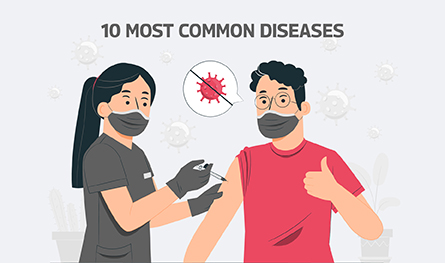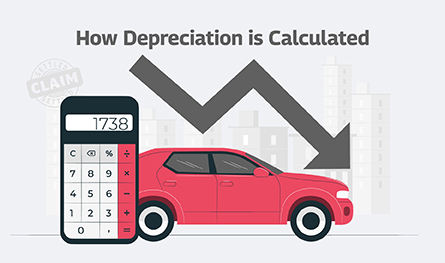Related Articles
 Jan 08, 2025
Jan 08, 2025
Is Varicose Vein surgery covered under the health insurance policy in India
 Health Insurance
Health Insurance

India faces many health challenges, with several diseases posing serious risks to people’s lives. Some diseases spread easily, while others happen due to lifestyle choices. Having health insurance can help manage medical expenses if you face any health issues. In this blog, we will discuss the top 10 most dangerous diseases in India, their symptoms, causes, and how to prevent them.

Heart disease is one of the leading causes of death in India. It includes conditions like heart attacks, heart failure, and blocked arteries.
Cancer occurs when abnormal cells grow uncontrollably in the body. It can affect various organs like the lungs, breast, and stomach.
Diabetes happens when the body cannot properly process sugar, leading to high blood sugar levels. If untreated, it can cause serious health problems.
TB is a bacterial infection that mainly affects the lungs but can spread to other parts of the body. It is a major public health concern in India.
COPD is a lung disease that makes breathing difficult. It usually happens due to long-term exposure to harmful gases, especially from smoking.
A stroke happens when blood flow to the brain is blocked, leading to brain damage. It can cause paralysis and even death if not treated quickly.
Dengue is a mosquito-borne viral infection that can cause severe flu-like symptoms and, in some cases, life-threatening complications.
Malaria is another mosquito-borne disease that affects millions of people in India every year, especially during the monsoon season.
Hepatitis affects the liver and can cause serious complications like liver failure and cancer if untreated. It spreads through contaminated food, water, and body fluids.
COVID-19 and other respiratory infections like pneumonia and flu continue to affect people, especially those with weak immune systems.
1. हृदय रोग (Cardiovascular Diseases)
2. मस्तिष्क का आघात (Brain Stroke)
3. श्वसन संबंधी रोग (Respiratory Diseases)
4. टीबी (Tuberculosis)
5. क्रॉनिक ऑब्सट्रक्टिव पल्मोनरी डिजीज (Chronic Obstructive Pulmonary Disease)
6. मधुमेह (Diabetes)
7. भूलने की बीमारी (Alzheimer)
8. दस्त (Diarrhea)
9. कार्सिनोमा (Malignant Tumors)
10. कोविड-19 (Covid-19)
Duncan disease, also known as X-linked lymphoproliferative (XLP) syndrome is a rare genetic condition in which the immune system stops working properly.
Down syndrome, Fragile-X syndrome, Turner syndrome, Triple-X syndrome, and Klinefelter syndrome are five genetic diseases.
Systemic sclerosis or Scleroderma is a disease where a group of uncommon disorders causes an individual’s skin to tighten and become hardened.
After COVID-19, Tuberculosis is the most fatal and infectious disease in the world. The drug-resistant TB strains are a great cause of concern.
As per the National Institutes of Health (NIH), there are over 7,000 rare or uncommon illnesses present. Some rare diseases are hereditary and are passed from parent to their children, while some are visible at birth. There is another group that might show up later in life.
Some diseases/conditions have no cure. Some of them are also enlisted in the list of deadliest diseases including conditions like Alzheimer’s disease, multiple sclerosis, muscular dystrophy, and some forms of cancer.
Ischemic heart disease is one of the deadliest diseases and a leading cause of death globally. Stroke, COPD, respiratory cancers, and lower respiratory infections are other diseases accounting for a noteworthy number of deaths each year.
Young and healthy? Find out which of these plans rewards you with lower premiums. Click here to check now!

Paybima Team
Paybima is an Indian insurance aggregator on a mission to make insurance simple for people. Paybima is the Digital arm of the already established and trusted Mahindra Insurance Brokers Ltd., a reputed name in the insurance broking industry with 21 years of experience. Paybima promises you the easy-to-access online platform to buy insurance policies, and also extend their unrelented assistance with all your policy related queries and services.

.jpg)
Having a bike is not just about convenience, it’s a huge responsibility. Financial protection of your two-wheeler is important and the best way to ensure that is to have a bike insurance policy that will protect you in case of an accident, theft or a natural calamity. There are so many options when it comes to policies, making it difficult to know what’s best. This guide makes it easier to choose the best bike insurance policy that is suitable for you.


Non-linked, non-participating term plans are the ones that do not participate in the business and profit of the insurance company. These are fixed premium plans where the policyholder pays a fixed amount to ascertain a guaranteed sum as a return to be paid to the nominee in case of his/ her demise. Let’s learn more in this post.


Car depreciation implies the difference between the cost of a car at the time of buying the car and when you sell it. A car insurance claim amount is determined by the car depreciation rate. The car depreciation rate is the reduction in the value of your car over its lifespan caused by wear and tear.


Have you ever caught yourself lost in illusions about your daughter's future events, such as her university convocation and first day at work? Her university convocation. When she embarks upon her initial job after graduation will be the day.

.png)
Accidents can happen anywhere, anytime, by your own fault or another person. What’s important is to be prepared for such mishaps. This is where Own Damage Car Insurance comes in handy.
